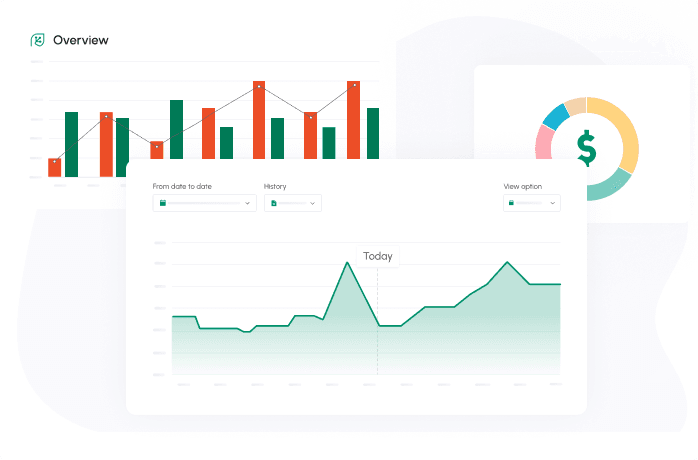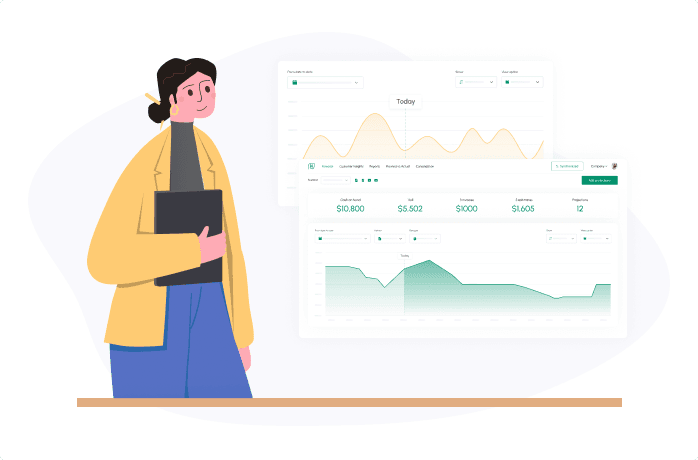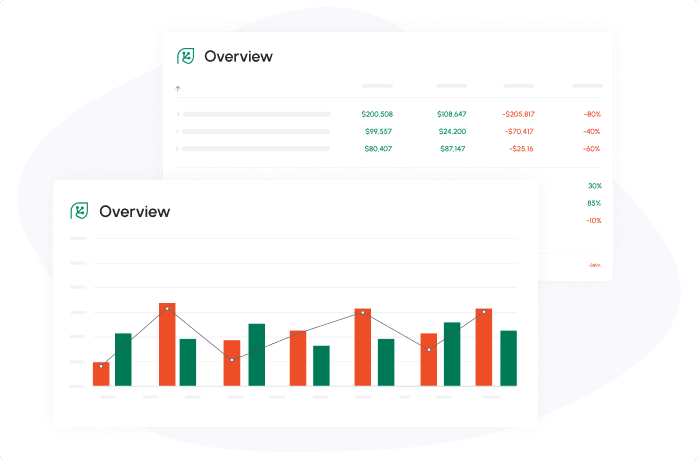

Managing the cash flow in business is one of the most difficult aspects of being successful. Financial handling is the leading reason for failure in business, and your cash flow is the key ingredient in the equation.
Why Is Cash Flow Important to a Small Business?
What is cash flow management? It is the difference between the money that comes into a business and goes out of a business. If you start a business, let’s assume the following:
- You begin the business with $200,000 in capital
- Each year you have $500,000 coming into the business
- Annually, you have $550,000 in cash outflows
Annually, you’re short $50,000 in cash, and then you need to make up for the loss with your capital. Four years into your operation, you’ll run out of capital because of past shortfalls. In the case above, you’ll have a few options to keep your business operational:
- Secure capital to cover costs
- Reduce costs to reduce cash outflows
Businesses cannot exist without some form of positive cash flow.
How To Successfully Manage Your Cash Flow
Cash management for small businesses is one of the most valuable skills that you can learn. If you want to find success in any form, you must manage your cash flow. How? We’re going to share quite a few tips below, but one of the most important is creating a budget.
Where Does a Budget Fit into Cash Flow?
Budgeting is an element of cash flow that you can use to manage cash flow properly. If we go back to the example above, it would be clear that your budget is too high and can lead to significant cash shortfalls.
Many businesses operate in this space and do find success, but they’re only able to stay afloat with significant influxes of cash. Imagine a giant tech company that is losing $50 million a year. Many have been in this situation for 5 – 10 years. Twitter is a prime example of where this has occurred. Between 2012 and 2017, the company never made a profit.
In fact, the company lost:
- $79 million in 2012
- $645 million in 2013
- $577 million in 2014
- $521 million in 2015
- $456 million in 2016
- $108 million in 2017
No other business would be able to sustain this level of losses over the long term without massive funding. You need to either secure funding that will allow you to operate until you gain a significant market share and become profitable, or you need to have a very detailed budget.
Your budget will shed light on income that comes into the business and expenses.
Creating your budget will require you to use some of the data that you already have at your disposal or to conduct substantial market research. You need to gather the following data to come up with a strong budget:
- Fixed expenses
- Variable expenses
- Expected revenue
Expenses are something that you have partial control over because you can decide to reduce expenditures. There are some expenses, such as utilities and lease payments, that you can’t control fully, but there are also expenses that you can, such as:
- Salaries or the number of employees you maintain
- Product development
- Expansion
- Etc.
Expansion is something that you may want to promote, but it doesn’t mean that you have the viable funding to reach this goal.
Once you have all of your expense data, you’ll need to determine the difference between your revenue and expenses. Your budget should allow you to have enough cash inflow to cover all of your expenses.
If you can maintain a strict budget and adjust it based on real-time data, you’ll be well on your way to positive cash flow. We'll be sharing a few tips on positive cash flow in just a few sections.
The Impact of Cash Flow on Small Business Operations and Growth
Managing the cash flow of a business will have an impact on both operations and growth. How? In a few ways:
Negative Impact on Operations and Growth
If cash flow is not monitored and taken into consideration, it will lead to significant operational and growth issues. Without positive cash flow, you will not be able to:
- Hire the best employees in the industry, allowing your competitors to gain a big advantage.
- Leverage growth opportunities because you will not have the liquidity to invest in your business the way you would like.
- Debt can pile up, causing you to pay high interest rates over the long term for the ability to keep operations running today.
Negative cash flow can also cause a business to go insolvent because there simply is not enough money to keep running the entity.
Positive Impact on Operations and Growth
If cash flow is good and you have more than enough cash to operate, it will open a world of possibilities for the business. You can hire the top talent in the industry to help push your operations further.
However, you will also have the cash to be able to:
- Expand into new markets to capture market share and boost revenue
- Invest heavily in research and development
- Take more risks and reap higher rewards In business, there is never too much cash flow. The opportunities that cash flow provides are simply unmatched.
We recommend that every business have a way to run real-time cash flow statements, which is 100% possible with the help of a tool like Cash Flow Frog. The ability to see your cash position at any time will benefit your operations in numerous ways.
Using a Cash Flow Management Tool for a Small Business
Implementing a cash flow management tool for a small business can significantly streamline your financial processes and provide insights that manual methods might miss.
Tools like Cash Flow Frog not only automate the cash flow forecasting but also integrate with your accounting software, ensuring that your projections are accurate and up-to-date. This automation helps in reducing errors and saves time, allowing you to focus on other critical aspects of your business.
Benefits of Preparing a Cash Flow Statement
Creating a cash flow statement will benefit your business and decision-makers in a multitude of ways, including:
- Understand your liquidity position: Liquidity allows you to make the right decisions for your company without fear that you won’t have the capital to cover payroll and debts. Decision-makers may look at your liquidity and learn that you need to invest even more money into your operations because you’re flush with cash that isn’t making you more - money.
- Understand your profitability: Higher revenue and making more sales can lead to greater profitability, but there’s also the risk that you’re losing money. Cash flow statements shed light on your true profitability.
- Plan and coordinate the business’s next decisions: Cash flow statements may be positive or negative, but in both cases, they will lead to the next decisions of your business. You can use the data in the statement to pave the next path for your company going forward.
Cash flow statements may show that your business is profitable or even unprofitable. In these cases, you can use the data to better plan your next steps to strengthen operations.
How Do You Get Positive Cash Flow?
Cash flow needs to be positive at some point unless you have unlimited funding from outside sources. What can you do to get positive cash flow? Quite a bit. The tips below will allow you to improve your cash position by using strategies that some of the most successful brands in the world follow.
Send Invoices ASAP and Adjust Payment Terms if Necessary
Once you sell a good or service, do you send out invoices immediately? A lot of businesses make the crucial mistake of waiting to send invoices. Imagine this scenario:
- You hire someone to send invoices every Monday
- You allow invoices to be paid using net 60
- You complete an order on Tuesday morning
In this scenario, you’ll send your invoice six days after the work is completed, increasing the amount of time until you’re paid by as much as 10%. Instead, you should have invoice systems in place to send an invoice immediately when the service is rendered or the good is shipped.
Sending invoices rapidly allows your customers to pay you faster.
No one will pay you until the invoice is sent. Remember that. Additionally, you may want to adjust your payment terms. You have a few options here that make a lot of sense:
- Reduce Net 60 to Net 45, so you get paid faster
- Add in a late fee for late payments
However, it is always best practice to alert customers to these changes because they will need time to make adjustments, too.
Trim Expenses
When was the last time that you looked through your expenses? If you have enough money to cover the bills, you probably never think about ways to cut back on expenditures. Unfortunately, this relaxed approach will cause you to lose money in the long term.
You should determine ways to:
- Improve productivity to improve revenue and take more orders
- Negotiate new deals with suppliers to lower costs
- Eliminate subscriptions or expenses that are not being utilized properly
Monthly, go through your cash flow statement to find new ways to reduce your expenses.
Delay Payments
Another effective way to turn cash flow from negative to positive is to delay payments without being late.
If possible, consider extending 30-day payments to 90 or even 120 days if you can do so without being penalized.
Make sure that your vendors are aware of the situation and your slowdown of payments. Be transparent about your schedule so that they know what to expect.
Make Purchases Strategically
If you know that your business typically has cash on hand during certain months or periods of the year, consider delaying some purchases until this time.
Delaying outflows whenever possible will allow you to keep more cash in the bank when you need it most.
If you have loans, you can also consider making only the minimum payments if the interest rate is low.
Increase Prices
Another way to get positive cash flow is to raise your prices. While this is an unpopular move, it is sometimes necessary and warranted. If you haven’t updated your prices in years, then it’s time to make this move.
But if you’re going to raise prices, it’s important to do it strategically. The last thing you want is to lose customers.
The change doesn’t have to be drastic, and you should be transparent with your customers about the increase.
Another option is to find ways to bundle or repackage items in ways that can increase prices while offering value to your customers.
Improve Your Inventory Management
As a business owner, you know that inventory plays a big role in your cash flow. Improving inventory management can help ensure that your cash flow remains positive.
Here are some tips:
- Lock in prices in advance if possible. This may mean making purchases ahead of time, but this can also help you combat higher prices caused by inflation.
- Consider joining a purchasing group to boost your buying power.
- Join a shared warehouse to store your inventory.
- Don’t keep too much stock on hand if it isn’t going to move quickly.
Take the time to do an inventory check and create a list of items that aren’t moving as quickly as others. These are the items that are tying up your cash.
Consider getting rid of these items at a steep discount. You may not generate as much revenue as you wanted from these goods, but they will no longer be holding your cash hostage.
Lease Instead of Buy
Most businesses use a variety of equipment in their day-to-day operations. But purchasing equipment can be costly and will quickly erode your cash flow.
Rather than purchasing or financing your equipment, consider leasing.
Leasing will come with a lower monthly payment, and you have the option of upgrading to newer models without having to make a large upfront investment.
With leasing, you’ll pay for your equipment in small, monthly increments, which will improve your cash flow.
Give Customers an Incentive to Pay Early
The quicker customers make payments, the better. It’s great when customers pay on time, but it’s even better when they pay early. Why? Because the cash will land in your bank account before you expect it to.
One way to encourage early payments is to offer an incentive, such as a discount. Customers will be happy to make their payments a little earlier if it means saving money on their purchases.
Make it Easier to Pay Invoices
What are your current payment options? Do you offer electronic payments? If not, now is a great time to start.
If you make it easier for customers to make payments, they’ll be more inclined to make their payments on time or early. Along with cash or check, you can also allow your customers to pay invoices via:
- Credit card
- Debit card
- Wire or bank transfer
You can even offer automated payment options.
Implementing an online payment system will be an investment, but it will be well worth the cost to ensure speedy payments from your customers. Plus, customers prefer to have multiple options when making payments, so you’ll be improving the customer experience at the same time.
Negotiate with Suppliers
If you have established positive relationships with suppliers, you may be able to negotiate better prices or terms. For example, you may offer to make payments early in exchange for a discount.
Negotiating a better deal with a supplier can help reduce your expenses and turn negative cash flow into positive cash flow.
How To Calculate Your Small Business Cash Flow
Now that you understand the benefits of preparing a cash flow statement and how to get positive cash flow, it’s time to actually calculate your business’s cash flow.
You can’t take steps to correct cash flow shortages or gaps if you don’t know where you stand.
You can calculate cash flow for individual months to see what your financial situation looks like right now. Here’s how:
1. Add Your Starting Balance and All Income
Your cash flow calculation should start with your opening or beginning balance. This is how much cash you have at the start of the calculation period.
Below this number, you’re going to list your total income from all sources.
Finally, you’ll add your beginning balance and total income together.
2. Tally Up Your Outgoings
Below your income total, you want to start calculating your outgoings in a separate section and list.
List every expense and its amount, leaving no leaf unturned. Having a list of every expense will make it easier to know which ones to cut if your cash flow is in the negative.
Now, add up all of your expenses to get your total.
3. Calculate Your Cash Flow
The final step is to subtract your outgoings from your income to get your cash flow.
Let’s say that your income total was $20,000 and your outgoings total was $10,000. That would leave you with a net cash flow of $10,000. In this case, you have positive cash flow and can decide how you want to leverage this surplus. You can reinvest in the business, or build up your cash reserves.
Now, let’s say that your income total was $20,000, but your outgoings total was $22,000. That would leave you with a net cash flow of -$2,000. In this case, your cash flow is in the negative and you’ll need to take steps to:
- Increase sales
- Decrease expenses, or
- Seek financing
It’s common for businesses to have negative cash flow from time to time, but if it’s a recurring theme for your business, you may not be in operation for long.
Taking the time to calculate your cash flow can help you see where you stand and take action now before it’s too late. You can also take this time to create forecasts and projections that will look at the future of your cash flow.
Small Business Cash Flow Projections
Calculating cash flow for small business is only one piece of the puzzle. Creating cash flow forecasts or projections can help you understand where your business’s cash flow will be in the future and make decisions now that will help prevent cash shortages. But how do you create projections? The process is very similar to calculating your current cash flow.
1. Choose a Projection Period
The first step is to determine your projection period. Many businesses create projections for 12-month periods, but others may want to create projections for 3 years or even 5 years. Just keep in mind that the longer your projection period, the less accurate it will be.
2. Create a List of Your Income
The next step is to create a list of all of your income sources, and add this income to your beginning balance for operating cash. Make sure that you repeat this step for each month of the year.
3. Create a List of Your Outgoings
Once you have a list of your income, it’s time to work on your expenses, or outgoings.
Create a list of every likely expense your business will incur, such as:
- Accounts payable to vendors
- Payroll
- Loan payments
- Rent
- Raw materials and supplies
- Other operating expenses
Tally up your outgoings for each month.
4. Calculate Your Cash Flow
Finally, you will subtract your outgoings from income to get your projected cash flow for each month.
- If your cash flow is positive, then this means that you have excess cash that you can invest back into the business or build up your cash reserves.
- If your cash flow is negative, then this means that your outgoings exceed your income.
Negative cash flow is concerning, but don’t panic – there’s still time to act. Follow the tips in the section “How Do You Get Positive Cash Flow?” to start taking steps now to get your cash flow back into the positive.
Using an Automated Tool Like Cash Flow Frog
As you can see, the process of creating manual cash flow projections can be time-consuming, especially if you have a lot of income sources and outgoings.
The more data you have, the greater the risk of human error.
One way to ensure that you’re creating accurate projections is to use a tool like Cash Flow Frog. Cash Flow Frog connects with your accounting software to automate the forecasting and projection process to save you time.
Smart projections use your forecasts to predict future transactions. With Cash Flow Frog, you can create projections for up to three years.
Conclusion
Once you know how to manage cash flow small business, you’ll give your company a competitive advantage and the ability to leverage growth opportunities.
Related posts:
You may be interested:
New:











